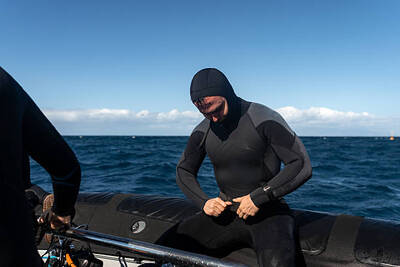What Does A Wetsuit Do?
-
As the name implies, a wetsuit allows water to come into contact with a diver's/snorkeler's skin. Most wetsuits are made of neoprene, a sponge-like material that contains countless air bubbles. These bubbles trap the diver's/snorkeler's body heat, which warms the water between the wetsuit and the body. Neoprene itself is waterproof, but water can get into the wetsuit because the seals at the neck, wrists, and ankles are not waterproof.
Style
Shorty: Shorty wetsuits provide the least warmth for divers or snorkelers. They cover the torso, part of the arms, and part of the legs. Shorty wetsuits protect divers from abrasions if they accidentally come into contact with underwater hazards; they also protect divers/snorkelers from stings from marine life.
One-piece: One-piece wetsuits are more commonly used by cold-water divers who want to protect their torso as well as their entire arms and legs. One-piece wetsuits usually have a zipper at the back for easy donning and doffing. One-piece wetsuits usually have slightly higher necklines to protect the diver's neck from the cold water and can easily accommodate a hood.
Thickness
Wetsuits are made from various thicknesses of neoprene. The thicker the neoprene, the better the warmth, but also the less flexibility. It is important to note that due to the air bubbles contained in the neoprene, the deeper you dive, the thinner the wetsuit becomes. If you are comfortable at the surface, but the wetsuit is not thick enough, you may feel cold at depth.
Fit
Because a wetsuit traps your body heat, it needs to fit snugly. If the suit is too loose, air can escape from the suit. It is important to note that a snug fit does not mean uncomfortable. If the suit pinches you, or your hands and/or feet start to tingle, the suit is too small. It is important to note that a wetsuit that fits snugly will reduce your range of motion. The thicker the neoprene , the less freedom of movement you will have.
Once you have your wetsuit on, look at yourself in a full-length mirror. If the suit has any bulges , it is too big. However, it is also common to see slight wrinkling at the bends of the elbows and knees. If you feel a little restricted when you take a deep breath, the suit fits snugly around your torso.





